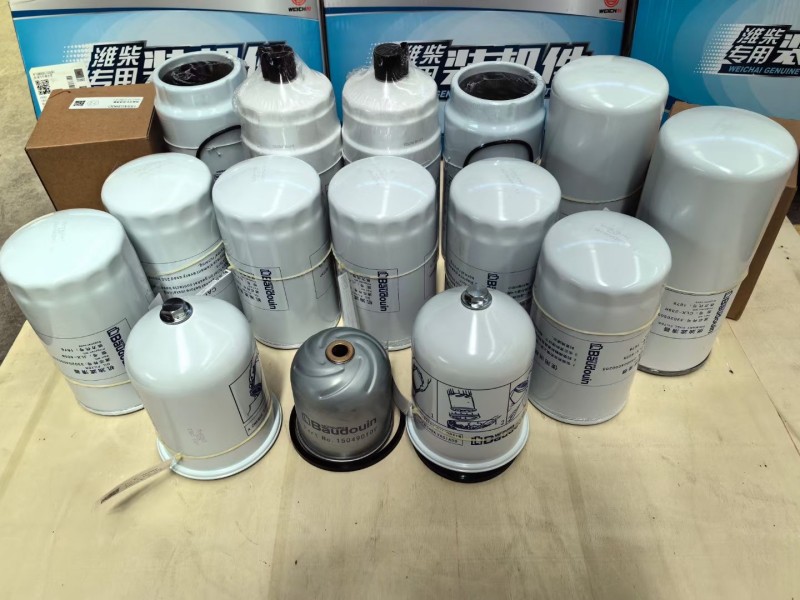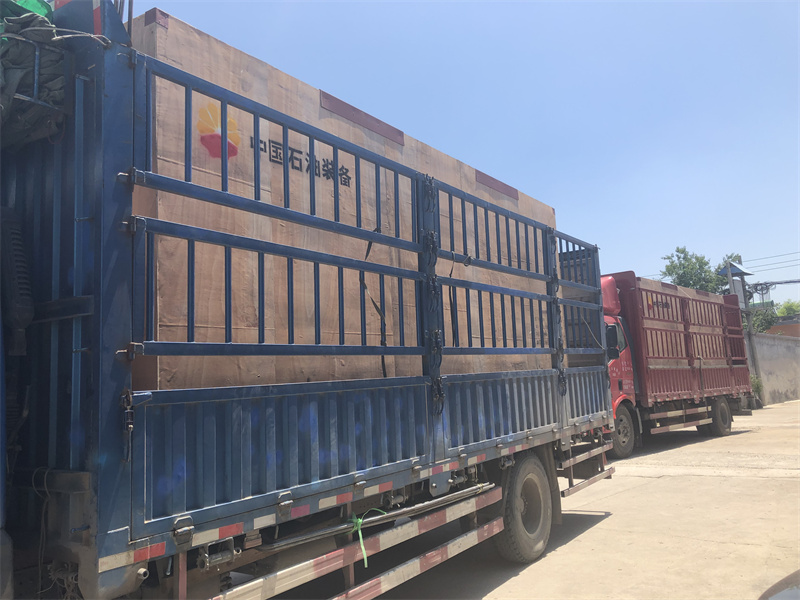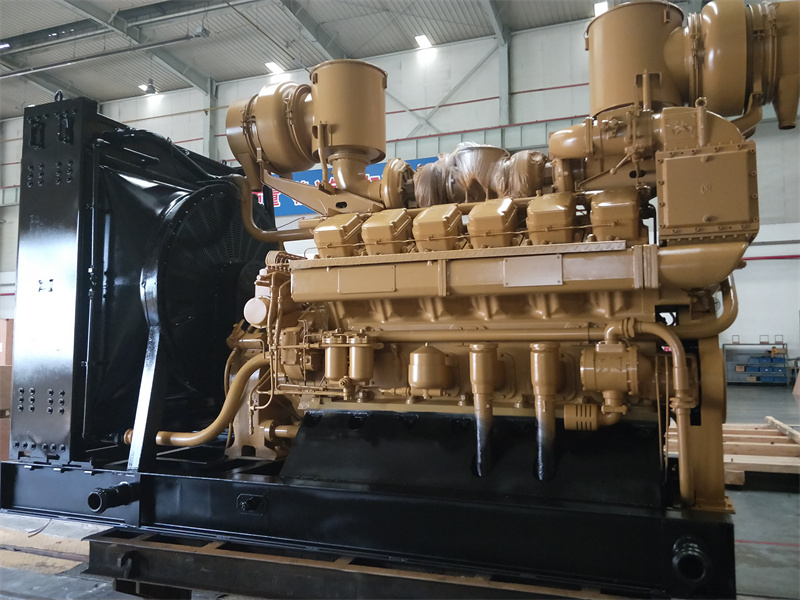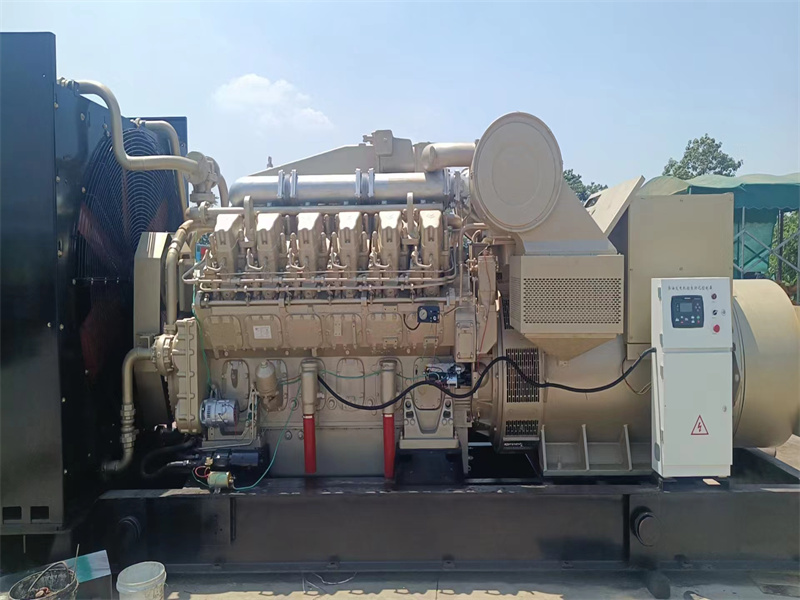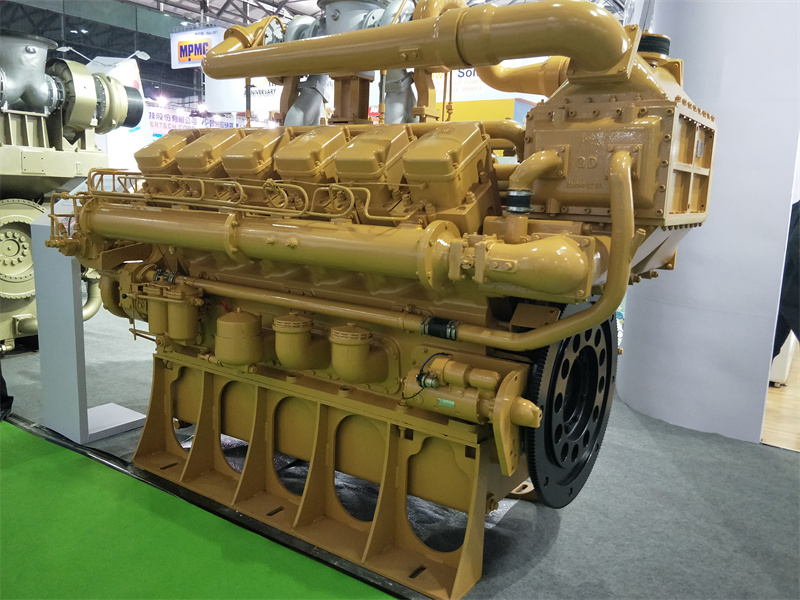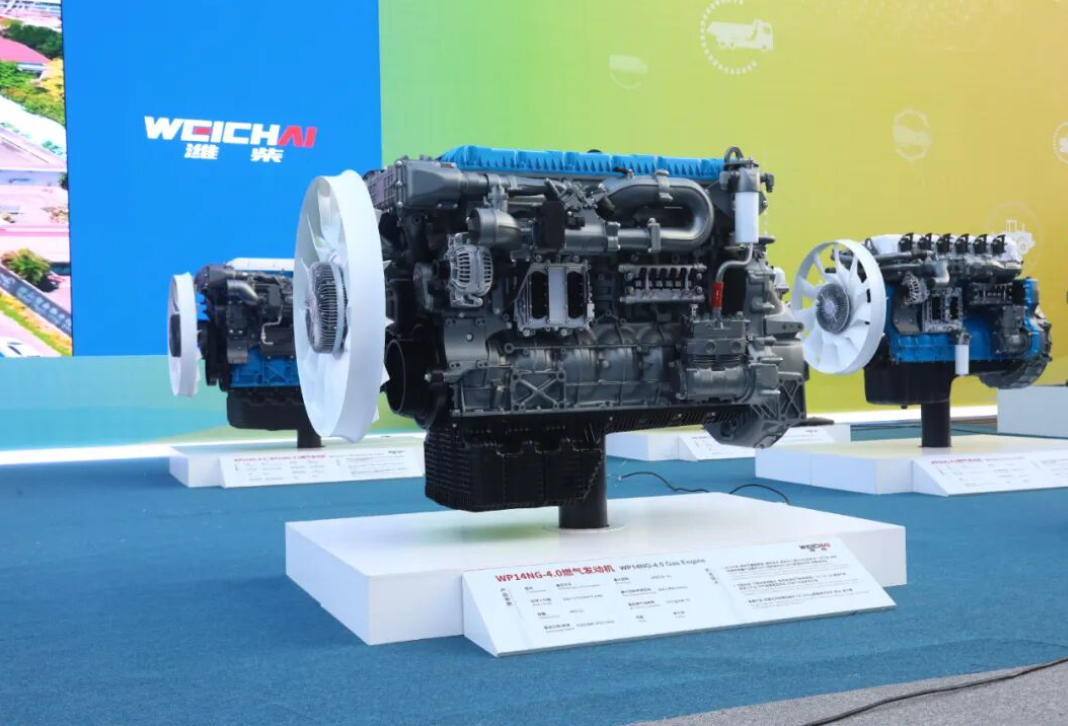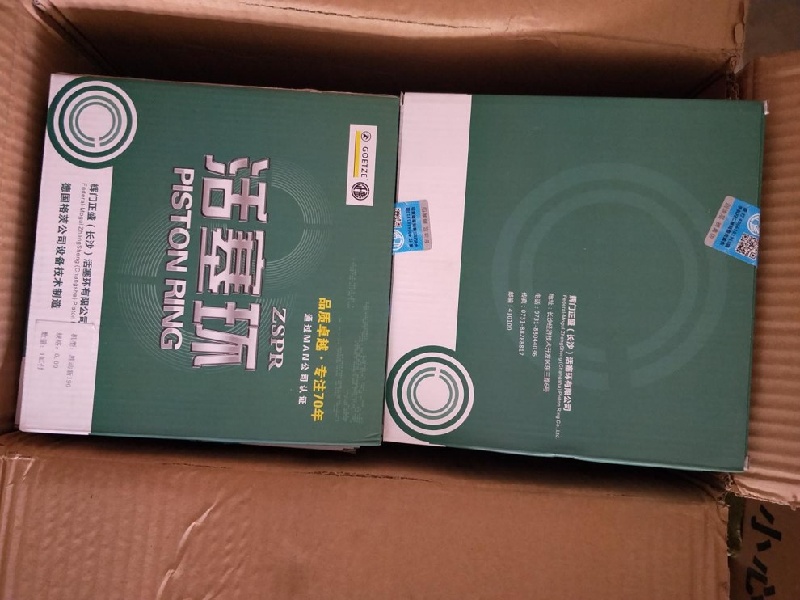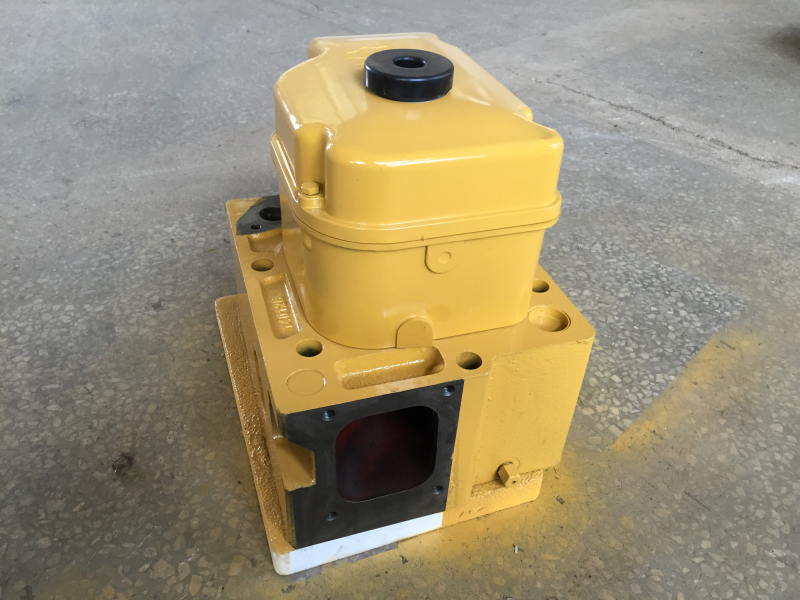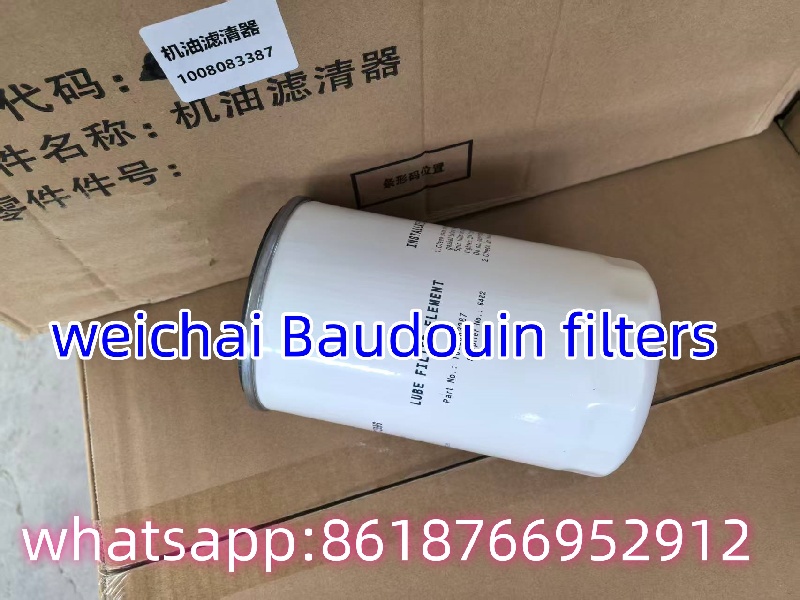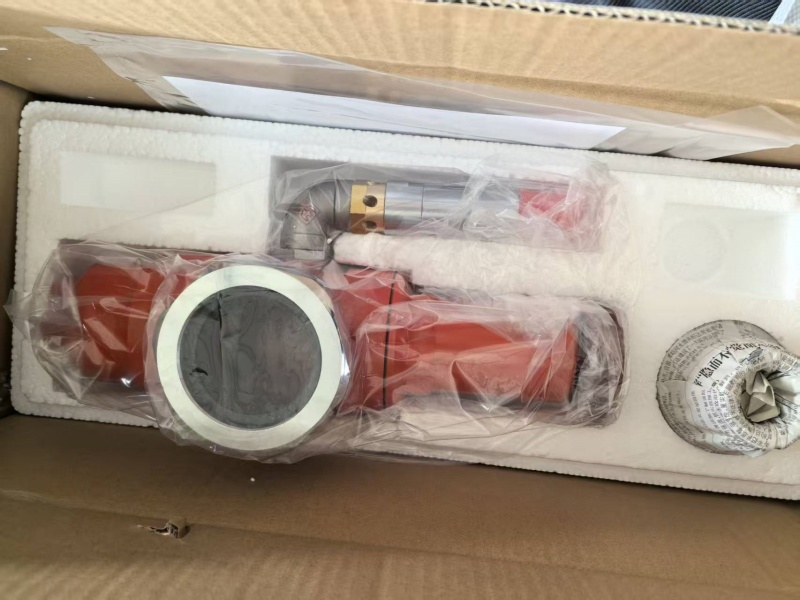Welcome to Shandong Hongfan Power Technology Co.,Ltd
how to make sure the trouble of engine?take jinan engine jichai G12V190ZDT as example
2. Troubleshooting
When there is blue-white smoke discharged from the exhaust pipe, there is carbon deposit on the spark plug, and there is deflagration and weakness during engine operation, it is generally diagnosed as cylinder oiling. According to the above reasons for oiling, those that can be avoided during engine maintenance should be avoided as much as possible.
Example 4 Insufficient cylinder pressure
Cylinder pressure refers to the amount of cylinder compression pressure when the piston reaches top dead center at the end of compression. Insufficient cylinder pressure means that the cylinder sealing is reduced, which will cause the engine power to decrease and make starting difficult. If individual cylinder pressure is insufficient, the engine operation will be unstable.
1. Cause of failure
1) The side clearance and opening end clearance of the piston ring are too large, or the labyrinth route of the gas ring opening is shortened, or the first sealing surface of the piston ring is worn, and its sealing performance becomes worse.
2) Excessive wear between the piston and the cylinder will increase the gap between the matching cylinders and the piston will swing in the cylinder, affecting the good sealing between the piston ring and the cylinder.
3) The piston ring is stuck in the piston ring groove due to glue and carbon deposits, so that the ring's own elasticity cannot be exerted, and the first sealing surface between the gas ring and the cylinder wall is lost.
4) Cylinder strain. When the cylinder is strained, the seal between the piston ring and the cylinder is destroyed, resulting in low cylinder pressure.
5) Mismatched pistons are installed. For some engines, the depth of the pit on the top of the piston is different. If used incorrectly, the cylinder pressure will be affected.
6) The cylinder gasket is damaged, the valve seat ring is loose, the valve spring is broken or has insufficient elasticity, the valve and valve guide are blocked due to carbon deposits or the gap is too small, causing the valve to move up and down, etc., resulting in loose valve sealing.
7) The timing gear is installed incorrectly, the gear keyway is incorrect, the timing gear is damaged or excessively worn, the hub and wheel on the camshaft timing gear are loose, etc., causing the assembly to malfunction.
Air phase is incorrect.
8) Mismatched cylinder heads are used. Some cylinder heads may have different combustion chamber volumes. If installed incorrectly, cylinder pressure will be affected.
9) The intake and exhaust valve clearance is improperly adjusted, or the seal with the valve seat is not tight, or the cylinder pressure is tested improperly.
10) For an engine equipped with a pressure reducing device, the clearance of the pressure reducing device is improperly adjusted, causing the valve to not close tightly.
2. Troubleshooting
Currently, there are many ways to detect cylinder pressure using cylinder pressure gauges. The cylinder pressure can be detected by measuring starter current and starter voltage. In addition, cylinder-by-cylinder measurement methods using hoses and compressed air can also be used. When using a cylinder pressure gauge to detect cylinder pressure, the engine should be in a normal hot state with the coolant at 85-95°C and the lubricating oil at 70-90°C. At the same time, the carburetor throttle and choke are in the fully open position, the spark plug is completely removed, use the starter to drive the crankshaft, and read the cylinder pressure gauge number.
Take appropriate maintenance measures based on the measurement results.
Example 5 Cylinder head deformation
The cylinder head closes the upper part of the cylinder and forms the combustion chamber together with the top of the piston and the cylinder wall. There is a coolant jacket inside the cylinder, and the coolant holes on its end face are also connected with the coolant holes on the upper end face of the cylinder block, so that the circulating coolant can be used to cool high-temperature parts such as the combustion chamber. In addition, the cylinder head has intake and exhaust valve seats and valve guide holes, intake and exhaust passages and spark plug holes (the diesel engine cylinder head has injector holes), etc.
1. Cause of failure
1) Failure to tighten the cylinder head bolts according to the requirements and methods during maintenance.
2) The cylinder liner is too much higher than the upper plane of the cylinder block, or the cylinder liner is of different heights, or the tightening force of the cylinder head bolts is uneven, causing the cylinder head to warp and deform.
3) The upper surface of the cylinder block is uneven, causing the cylinder head to deform along with the cylinder block after being heated.
4) The cylinder head material is unqualified and deforms greatly after being heated.
2. Troubleshooting
If the cylinder head plane is warped and deformed, the following two methods are generally used to repair it.
1) Local preheating and pressure correction, combined with scraping and trimming the surface. When the warpage deformation of the cylinder head plane is greater than the specified value, the cylinder head can be placed on a special flat plate, and pads with a thickness of about 4 times the deformation are placed between the two ends of the cylinder head plane and the flat plate, so that the middle of the cylinder head plane is suspended. . Then tighten the bolts, and use a blowtorch to preheat the middle part of the cylinder head to a temperature of 300-400°C. Then continue to pressurize the middle part to fit the reference plane. Use a hammer to gradually tap the cylinder head reinforcement ribs for 2-3 seconds. times, stay for about 5 minutes. Move the pressure plates to both ends of the cylinder head at 1/3 of the total length and tap them respectively. After staying for a period of time, loosen the clamping device and take out the cylinder head to check the correction. If it does not meet the technical requirements, it can be combined with scraping to trim the surface.
The plane deformation inspection of the cylinder head is the same as the plane inspection method on the cylinder block.
2) Plane milling method. Place the cylinder head on the support frame with the flat surface facing up, adjust the level and tighten it tightly. Select the milling specification for milling.
3) The protrusions near the bolt holes can be ground with a whetstone or fine grinding wheel or smoothed with a fine file.
Example 6 Cylinder gasket leaks air, coolant or oil leaks
The cylinder gasket is used to make up for the uneven joint surface between the cylinder head and the cylinder block to seal it and prevent coolant, air or oil leakage. The cylinder gasket is an integral part of the combustion chamber.
The reason why the cylinder gasket can seal the cylinder when the cylinder head is pressed is achieved by the plastic deformation of its own surface and its own certain elasticity. Damage to the cylinder gasket will cause the engine to run unstable, vibrate and start difficultly, become unstable at high or low speeds, cause individual cylinders to not work, significantly reduce power, and cause engine idling.
There is a "burst, burst" sound from the exhaust pipe at high speed, and at the same time, the sound of air leakage can sometimes be heard next to the engine. If the damaged part of the cylinder gasket is connected to the water channel, the coolant will leak into the oil pan, causing the lubricating oil level to rise, and the amount of water backflow in the radiator will also increase or bubbles will appear. There are coolant beads appearing at the muffler port.
1. Cause of failure
1) One of the planes of the cylinder head or cylinder block is warped or uneven, or the cylinder head or cylinder gasket is not cleaned during installation. The cylinder gasket cannot fill the unevenness, causing air leakage, coolant leakage, or oil leakage.
2) The coolant ports of the cylinder gasket, cylinder head, and cylinder block are not aligned and are damaged by the impact of the coolant flow.
3) The tightening torque of the cylinder head bolts or nuts does not meet the requirements; the tightening is not performed according to the required number of times or methods; when using a new cylinder gasket, the cylinder head cannot be tightened again after the engine is warmed up.
4) The height of the cylinder liner boss is not enough or the heights of the cylinders are not equal, or there is oil, water and rust in the bolt holes of the cylinder block, making the screw holes shallower, which will cause the cylinder head to be loosely pressed.
5) Failure to install according to the installation direction requirements. Some cylinder gaskets are marked "up", "forward", "this side faces up", or the side marked in English must face the cylinder head.
6) The cylinder gasket is of poor quality. For example, the thickness of the cylinder gasket is uneven or too thin. In addition, after repeated use, the thickness of the cylinder gasket has been reduced and it has lost its elasticity. It cannot compensate for the uneven joint surface of the cylinder head and cylinder block, resulting in loose sealing.
7) The engine often runs at high temperatures, or often ignites prematurely, or the engine compression ratio is increased, which can easily damage the cylinder gasket, causing air leakage, coolant leakage, or oil leakage from the cylinder gasket.
2. Troubleshooting
1) Choose a cylinder gasket that matches the engine specifications and is of good quality. If a cylinder gasket with a metal-asbestos gasket structure is used, and there is no replacement of the new cylinder gasket, the replaced old cylinder gasket can be evenly heated with fire to make the internal material (asbestos) become somewhat loose. Let it cool naturally before installing.
2) For cylinder gaskets that can be installed on both sides and have rolled edges, do not install them backwards. Make sure the smooth side faces parts that are not easy to repair or that are easily crushed. Those with installation marks should be installed according to the direction.
3) Tighten according to the specified torque, tightening times and methods during maintenance. After a period of use, the cylinder head bolt torque should be re-calibrated for the cast iron cylinder head. When reusing a cylinder gasket with one cover for two cylinders, keep it in place.
4) Prevent the bolts from becoming longer due to the thinning of the cylinder head and causing the bolts to be unable to be tightened. Clean the screw holes to reduce unnecessary torque resistance when tightening the bolts.
5) Prevent the engine cooling system from lack of coolant, excessive temperature, ignition or premature fuel supply (diesel engine). In addition, avoid overloading the car in low gear for a long time.
6) For cylinder gaskets that require adhesive spraying on both sides, spray them as required. In addition, if the bolts are long or short, they should be reset and installed according to their respective lengths.
7) Use the cylinder cutting method to check the working condition of each cylinder. If two adjacent cylinders are not working, it is likely that the cylinder gasket is damaged and the two cylinders are connected. The compression pressure of both cylinders is insufficient, making it difficult to start the engine.
8) Emergency treatment for damaged cylinder gasket:
▲If the cylinder gasket is damaged and forms a small opening, it can be filled with asbestos thread.
▲If the damaged area of the cylinder gasket is large, you can cut a piece from the same part of the exhaust gas cylinder gasket or cut a piece of cowhide patch with the same shape as the stretched part, pad it on the damaged area, and tap it carefully and gently to make sure the joint is good.
▲If the damaged area of the cylinder gasket is between the two cylinders, the asbestos wire or cowhide must be wrapped with copper leather.
